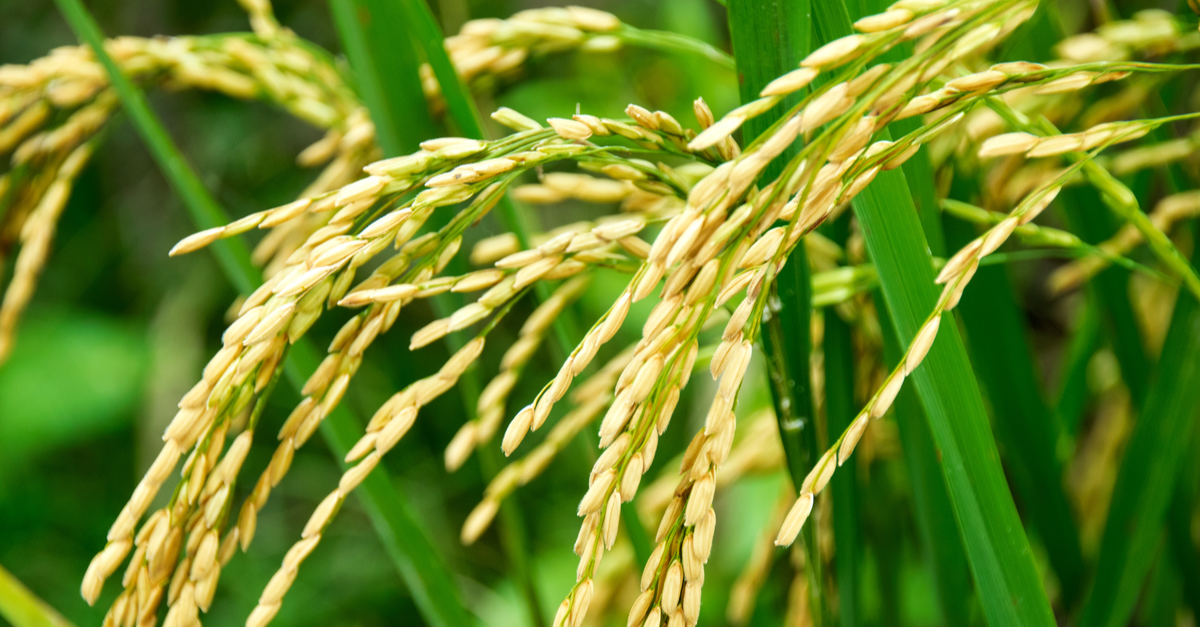Rice Husk
* Photograph and text used for illustrative purposes only
• Rice hulls (or rice husks): Hard protecting coverings of grains of rice (part of the chaff).
• Availability: Rice husk is abundantly available in the construction industry (hence less expensive than particle board made of wood). It has low bulk density (90-150 kg/m3), toughness, abrasive in nature and resistance to weathering
• Strength: Rice Husk Boards resist fungal decomposition and moisture penetration. Its high silica content make them termite-resistant
• Preferred usage: Potentially preferable to typical particle board, which often contains formaldehyde in the glue holding the wood chips together
• Wide usage: The medium-density range of the material is widely used for construction, furniture, interior decoration (wall ceiling paneling).
Rice husk is sometimes used to generate energy for the rice mills themselves. A survey of seven American States reported 10-100% rice husk being used in rice mill boilers. In power plants, rice husk is directly used as a good fuel
Rice husk is a class A thermal insulating material because they are difficult to burn and less likely to allow moisture to propagate mold or fungi. It is also used as roofing after mixing it with mud and water.
Combustion of rice hulls affords 'rice husk ash' (acronym RHA). This ash is a potential source of amorphous reactive silica, which has a variety of applications in materials science.
Most of the ash is used in the production of cement. When burnt completely, the ash is finer than cement. Silica is the basic component of sand, which is used with cement for plastering and concreting. This fine silica provides a very compact concrete. The ash also is a very good thermal insulation material. The fineness of the ash also makes it a very good candidate for sealing fine cracks in civil structures, where it can penetrate deeper than the conventional cement sand mixture.
Rice husk ash has long been used in ceramic glazes in rice growing regions in the Far East, e.g. China and Japan. Being about 95% silica, it is an easy way of introducing the necessary silica into the glaze, and the small particle size helps with an early melt of the glaze.
A number of possible uses for RHA include absorbents for oils and chemicals, soil ameliorants, a source of silicon, insulation powder in steel mills, as repellents in the form of "vinegar-tar" release agent in the ceramics industry, as an insulation material. More specialized applications include the use of this material as a catalyst support.
Most of the ash is used in the production of cement. When burnt completely, the ash is finer than cement. Silica is the basic component of sand, which is used with cement for plastering and concreting. This fine silica provides a very compact concrete. The ash also is a very good thermal insulation material. The fineness of the ash also makes it a very good candidate for sealing fine cracks in civil structures, where it can penetrate deeper than the conventional cement sand mixture.
Rice husk ash has long been used in ceramic glazes in rice growing regions in the Far East, e.g. China and Japan. Being about 95% silica, it is an easy way of introducing the necessary silica into the glaze, and the small particle size helps with an early melt of the glaze.
A number of possible uses for RHA include absorbents for oils and chemicals, soil ameliorants, a source of silicon, insulation powder in steel mills, as repellents in the form of "vinegar-tar" release agent in the ceramics industry, as an insulation material. More specialized applications include the use of this material as a catalyst support.
Rice hulls can be composted, but their high lignin content can make this a slow process. Sometimes earthworms are used to accelerate the process. Using vermicomposting techniques, hulls can be converted to fertilizer in about four months.
Rice hulls that are parboiled (PBH) are used as a substrate or medium for gardening, including certain hydrocultures. The hulls decay over time. Rice hulls allow drainage and retain less water than growstones. It has been shown that rice hulls do not affect plant growth regulation.
Rice hulls that are parboiled (PBH) are used as a substrate or medium for gardening, including certain hydrocultures. The hulls decay over time. Rice hulls allow drainage and retain less water than growstones. It has been shown that rice hulls do not affect plant growth regulation.
Rice hulls can be used in brewing beer to increase the lautering ability of a mash. Rice husk is also used in one step of traditional preparation processes of Kaoliang (Sorghum) liquid. After fermentation, rice husk can be added into the wine tank to increase the void, which is advantageous for distillation.
